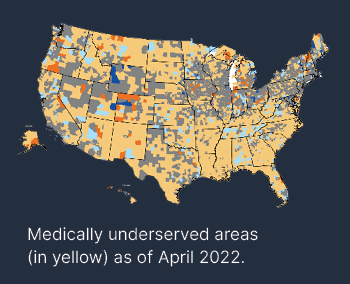A look at the fiscal impact of evolving approaches
Over-reliance on emergency services has been a concern for years. Overcrowded EDs not only compromise a hospital’s ability to serve those who truly need emergency care, but it also greatly impacts the system’s bottom line. In fact, the National EMS Advisory Council estimated that the uncompensated care absorbed by ambulance services alone is close to $3 billion.
Over the years, a number of solutions have been tried, such as providing patient education, extending physician hours, and focusing on “frequent flyers.” Alas, we still seem a long way from making a meaningful impact on the bottom line.
Having consulted with hundreds of emergency departments across the U.S. during my 18-year career, I keep coming back to hybrid care—a combination of digital and physical approaches—as a viable solution for this on-going problem. Hybrid care can have a profound impact on value-based care incentives and capitated risk models while keeping fee-for-service in place where it makes sense.
Let’s see how emergency services can use this approach to improve revenue.
Emergency Room Triage
Triage that includes both digital and in-person aspects is ideal. If acuity is assessed virtually, such as through a symptom checker, an emergency department could direct a patient to the correct level of care immediately. In-person patient care is still available, but with less “boarding” and no unnecessary (and expensive) ER visits that may be hard to collect payment for.
That’s no small thing: According to the American Hospital Association, hospitals of all types have provided almost $745 billion in uncompensated care to their patients since the year 2000. But it’s not just about avoiding bad debt—it’s also about increasing revenue through value-based care incentives for lowering the number of unnecessary ER visits. That’s hybrid care that’s healthy for the patient and the bottom line.

Ambulance Care Teams
Emergency transportation can provide hybrid care too, with an appropriate determination of care conducted on the scene that can lead to, yes, a visit to the emergency room, but also other possible locations (like a mental health clinic, an urgent care facility, or a physician’s office) or even a “treat-in-place” encounter with a live doctor on screen right then and there—an approach that can result in 19% fewer visits to the emergency room or urgent care, relieving a tremendous burden on health systems.
Medicare and Medicaid agree that driving patients to hospitals should not be an EMS responder’s only option. In fact, both now reimburse hybrid models called ET3, or Emergency Triage, Treat, and Transport (as my colleague, Justin Miller, covered in a recent blog).
The fewer ambulances that go to the ER unnecessarily, the more vehicles we have on the road responding to true emergencies, in both urban and non-urban settings. Plus, hybrid options diversify the service’s revenue streams, making their business model more robust. That’s why Forbes regularly covers telehealth as one of the emerging vanguards of emergency medicine today.
Reaching the Underserved
 The value of hybrid care for healthcare systems increases even further in underserved areas. Communities with low incomes and deep vulnerabilities have the highest rate of ER visits. Towns in far-flung locations may only have one or two ambulances. The 42 million Americans without broadband can’t do audio/video virtual visits. Hospitals and EMS agencies could expand services to all these patients with hybrid care that reduces ER visits, makes transportation more efficient, and brings tools and technologies that provide access.
The value of hybrid care for healthcare systems increases even further in underserved areas. Communities with low incomes and deep vulnerabilities have the highest rate of ER visits. Towns in far-flung locations may only have one or two ambulances. The 42 million Americans without broadband can’t do audio/video virtual visits. Hospitals and EMS agencies could expand services to all these patients with hybrid care that reduces ER visits, makes transportation more efficient, and brings tools and technologies that provide access.
And it’s a winner with customers: 61% of patients prefer hybrid care. When we provide hybrid care options to EMS, we practice person-centered medicine at its best.
Double Bottom Line
Hybrid care also has an important social impact, because it reduces healthcare disparities by increasing access. While it’s easy to connect the dots in developing nations, the same is true in many areas of the United States. In my home state of Alabama, for example, nearly the entire state is considered underserved medically.
I recently participated in a panel at Amazon Web Services’ (AWS) Health Equity Initiative to discuss the social determinants of health where we discussed how crucial virtual care is in underserved communities where in-person services are not always available. Look for that blog installment in the coming weeks.
Evolve Today
Healthcare is changing rapidly, but technology can be harnessed to solve long-standing challenges. Learn more about how eVisit does it today.





